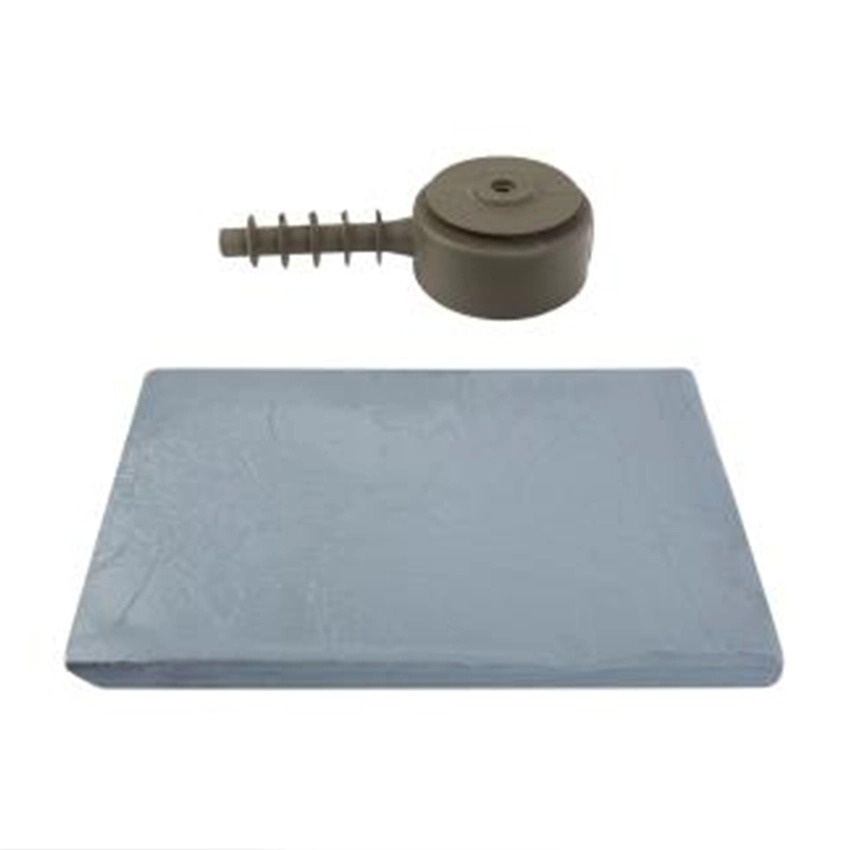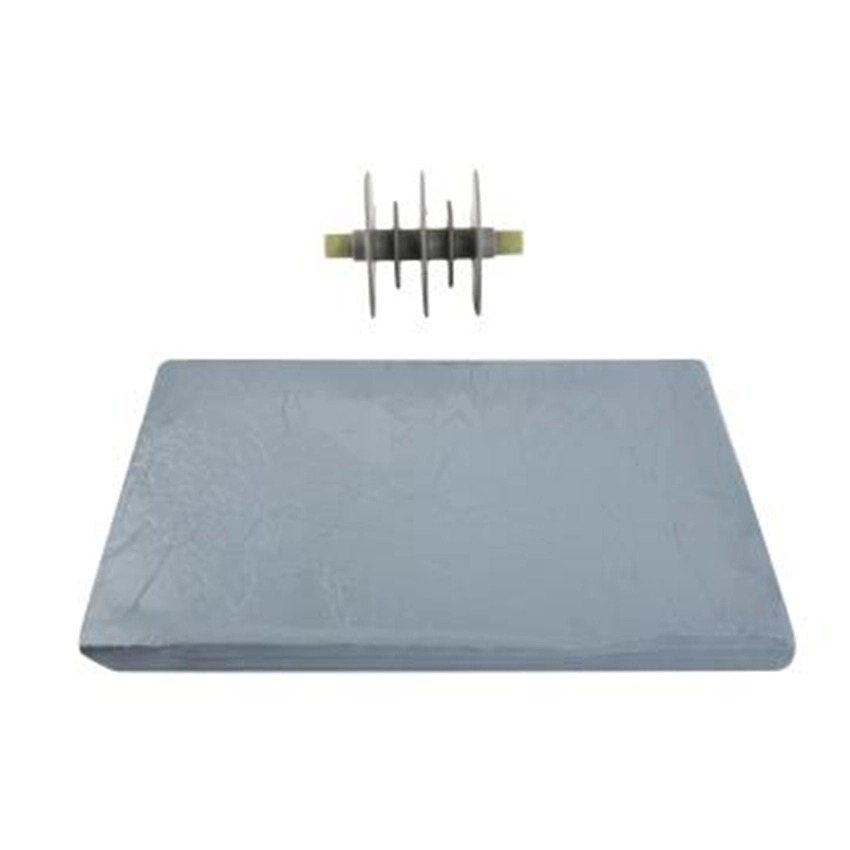Views: 241 Author: Site Editor Publish Time: 2025-09-06 Origin: Site











Electrical insulation silicone rubber has become a cornerstone in modern engineering applications, particularly where safety, performance, and long-term durability are demanded. But what truly makes this material stand out when compared to conventional insulating materials? At its core, silicone rubber offers exceptional resistance to electrical breakdown while simultaneously maintaining stability in both extreme heat and cold environments. Its molecular structure, composed of a flexible backbone of alternating silicon and oxygen atoms, provides a unique balance between elasticity and resilience. Unlike organic rubbers that degrade more rapidly under high voltage stress or UV exposure, electrical insulation silicone rubber maintains integrity across a wide spectrum of operating conditions. This feature is vital for industries that operate under rigorous standards, such as aerospace, automotive, renewable energy, and consumer electronics. Beyond performance, it also offers advantages in terms of safety, as the material’s inherent flame resistance reduces fire risks in high-voltage assemblies. By combining electrical insulation properties with thermal endurance and environmental resilience, silicone rubber has earned a reputation as one of the most versatile insulating materials available today.
When assessing the practicality of an insulating material, engineers must ask how it behaves when exposed to extremes of temperature, humidity, and pressure. Electrical insulation silicone rubber is well regarded for its ability to maintain consistent performance even in environments where fluctuations would normally compromise insulation. Its operational range typically spans from –60°C to over 200°C without significant degradation. This flexibility enables it to serve in both cryogenic equipment and high-temperature industrial applications. Unlike many thermoplastic insulators, which may become brittle in cold weather or soften excessively at elevated heat, silicone rubber remains dimensionally stable, preventing microcracks that could allow current leakage.
In addition, silicone rubber demonstrates low water absorption, making it resistant to electrical failures caused by moisture ingress. For installations in marine, humid, or outdoor environments, this property significantly reduces maintenance costs and system downtime. Furthermore, the dielectric strength of electrical insulation silicone rubber is remarkably high, ensuring that even under high voltage stress, it resists arcing and breakdown. This capacity is critical in applications such as transformers, cables, or protective coatings for sensitive circuits. By maintaining insulation integrity under pressure, temperature swings, and wet conditions, silicone rubber provides engineers with confidence that system performance will not be compromised even under the harshest operational realities.

To better understand why this material is chosen over alternatives, one can break down its characteristics into measurable properties. The table below outlines essential attributes that engineers consider:
| Property | Performance of Electrical Insulation Silicone Rubber |
|---|---|
| Dielectric Strength | High, resists electrical breakdown |
| Temperature Resistance | Operates from –60°C to 200°C+ |
| Moisture Resistance | Low water absorption, prevents current leakage |
| Flexibility | Maintains elasticity over time |
| Flame Retardancy | Naturally resistant to fire hazards |
| Chemical Resistance | Stable against oils, solvents, and environmental stressors |
Each property is not only relevant individually but also in how they interact to create a balanced material solution. For example, flexibility combined with high dielectric strength ensures cables coated with silicone rubber can bend and flex during installation without risk of insulation cracking. Meanwhile, flame retardancy and chemical resistance extend lifespan in industrial settings where accidental contact with oils or solvents might otherwise compromise insulation.
The ability of silicone rubber to consistently deliver across such a range of properties reduces the need for multiple insulating materials, simplifying both design and manufacturing processes. This all-in-one performance characteristic makes electrical insulation silicone rubber an economically advantageous choice in industries where downtime and material replacement can prove costly.
Traditional insulation materials, such as PVC, polyethylene, or natural rubber, certainly play significant roles in electrical systems. However, when comparing them to electrical insulation silicone rubber, notable differences emerge. One of the primary advantages is thermal stability. While PVC tends to soften or even release harmful gases at elevated temperatures, silicone rubber retains its structural and insulating capabilities without producing toxic byproducts. Similarly, polyethylene performs well at standard temperatures but lacks the resilience to withstand constant mechanical stress or ultraviolet radiation over prolonged exposure.
Another decisive factor is longevity. Silicone rubber exhibits superior resistance to environmental aging, meaning that installations can remain operational for decades without significant loss of performance. This contrasts with traditional rubbers that can harden, crack, or lose flexibility, ultimately leading to costly repairs or replacements. Furthermore, silicone rubber’s flame retardant behavior provides a level of safety assurance often absent in alternative materials. In electrical installations where human safety is paramount, this property cannot be overlooked.
For applications in industries such as medical devices, aerospace, or high-voltage infrastructure, the performance differences become even more critical. Reliability in these contexts is not merely a cost consideration but a matter of compliance with international safety standards. Consequently, electrical insulation silicone rubber has grown into the preferred choice, offering not just functionality but also peace of mind.
Applications of electrical insulation silicone rubber span a wide array of industries due to its versatility. In the electronics sector, it is commonly employed as a coating for wires, cables, and connectors, ensuring that miniature circuits remain protected against electrical leakage and thermal overload. In automotive manufacturing, it plays a role in both traditional vehicles and electric vehicles, where high-voltage battery packs and charging systems require insulation that can endure vibration, temperature extremes, and chemical exposure from engine fluids.
The aerospace sector relies heavily on silicone rubber for insulating cables and components exposed to drastic pressure and temperature changes at high altitudes. Similarly, the renewable energy industry, particularly in wind turbines and solar installations, integrates silicone rubber insulation to handle outdoor exposure, UV radiation, and fluctuating thermal conditions. Even in the medical device field, where safety and precision are vital, silicone rubber serves as an insulator for sensitive instruments that demand biocompatibility alongside electrical protection.
What unites these industries is the necessity of uninterrupted performance. Whether it is ensuring the safe operation of hospital equipment, maintaining communication systems in aircraft, or preventing power losses in renewable energy grids, electrical insulation silicone rubber consistently delivers. Its adaptability allows engineers to standardize on one reliable material across diverse environments, further demonstrating why it has become an essential solution for modern engineering challenges.

Is electrical insulation silicone rubber safe for high-voltage applications?
Yes, it offers high dielectric strength, making it reliable for use in cables, transformers, and other systems operating under significant voltage stress.
Does silicone rubber degrade over time when exposed to sunlight?
Unlike many traditional polymers, silicone rubber resists UV radiation effectively, maintaining both flexibility and insulation capabilities.
Can electrical insulation silicone rubber withstand exposure to chemicals?
Yes, it demonstrates notable resistance to oils, solvents, and certain chemicals, making it suitable for harsh industrial environments.
What makes silicone rubber more expensive than conventional insulators?
The higher upfront cost reflects its durability, safety, and performance advantages. Over time, reduced maintenance and replacement needs often offset initial expenses.
Is silicone rubber eco-friendly?
While not biodegradable, its long lifespan and reduced need for frequent replacement contribute positively to sustainability by lowering waste.
Electrical insulation silicone rubber embodies a unique combination of properties—thermal endurance, dielectric strength, chemical resistance, and flame retardancy—that makes it indispensable across industries. Its versatility extends far beyond simple wire insulation, influencing innovations in medical technology, aerospace systems, renewable energy infrastructure, and consumer electronics. Unlike traditional insulating materials that may degrade or fail under extreme conditions, silicone rubber consistently ensures safety, performance, and reliability. For engineers and manufacturers striving to meet demanding performance criteria while safeguarding end users, this material remains a proven, forward-looking solution.